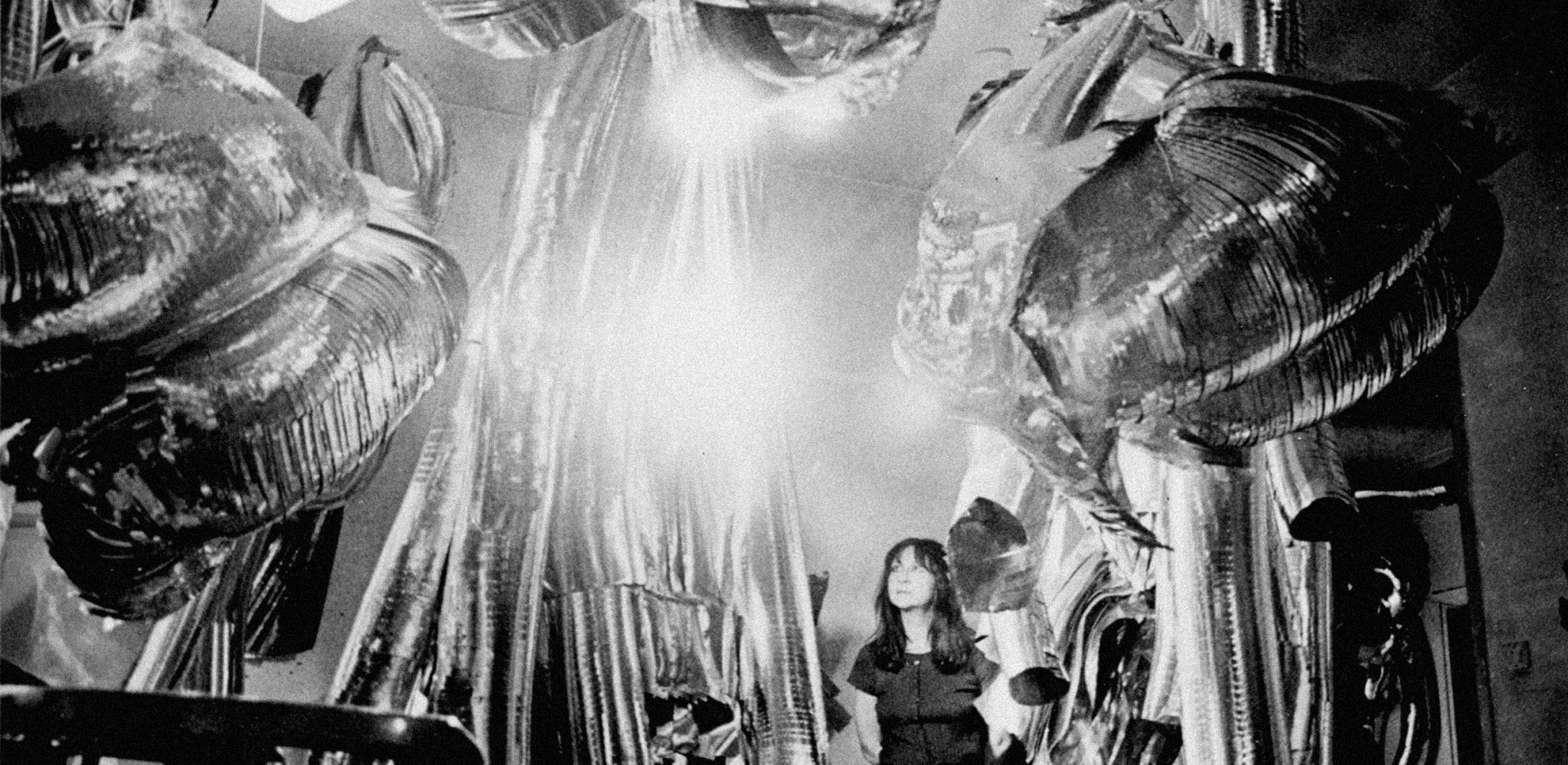Maybe it’s the coronavirus, but Oliver Basciano sees monsters in this work from the 1960s
The thing about Marisa Merz’s ‘Living Sculptures’ is that they were first made to be lived with. Or at least among, or around. There was always a negotiation involved. Keen to thwart any separation of art from life, the artist allowed the work – strips of aluminium looped and coiled to create long, snaking tubes that were suspended from the ceiling, clustered in various arrangements – to colonise as much spare space in her Turin home as possible. For Merz, and her artist husband, Mario, both pioneers of Arte Povera, together with daughter Beatrice, the sculptures, when they were first created in 1966, were the subject of constant physical negotiation.
Archive photographs show how the tubular structures interwove as they took over the apartment: they covered the kitchen ceiling, possibly collecting steam from the gas hob below; they spread through to the living room, drooping down over the bulky television and winding their way under the living room table, rising up to all but obscure the view through the window. It was a self-generated intrusion into and redefinition of their domestic space. The architecture of the house (Merz studied architecture, and had trained in ballet as well) became almost a living organism in constant flux, contracting and re-forming as Merz expanded the work. Revisiting documentation of the sculpture online (smaller, later, more tightly arranged iterations of the series are now in the Tate collection and have been shown at the Venice Biennale), as a ‘viewer’ under lockdown in 2020, when our relationship to our own homes has been radically altered (at least temporarily), I experience the first Living Sculpture with an acute sense of claustrophobia.
For Merz, who conducted significant portions of her professional life in the company, and with the help, of Beatrice, the sculpture would have had another presence entirely. In an interview describing this time in her life, and referring specifically to smaller woven works, Merz explained that ‘everything was on the same level, Bea [Beatrice] and the things I was sewing’. That her sculptures grew out of circumstance is not surprising. Though she isn’t mentioned in Germano Celant’s ‘Arte Povera: Notes for a Guerrilla War’, a 1967 text that served as a surrogate manifesto for this group of artists, Celant wrote, that artists working in the style were committed to ‘contingency, to events, to the non-historical, to the present’.
Today, however, for those of us, parents or no, whose professional lives have trespassed into private spaces and find the overlap suffocating, Merz’s work can seem more relevant than ever, if for other reasons. The domestic realm has been multipurposed as office, school, gym, studio, quarantine unit. The home has become both a bunker built from walls that disease must not breach, and a prison, a place in which our entire lives are enacted, where we are trapped for almost every hour of the day. In this context, looking back on the Living Sculptures, I see the darker, invasive qualities of the work: metal worms suggestive of a virus eating the home from within (the artwork remains contingent to context after all.)
The artist was not primarily concerned with the environment in which the work was produced and first installed (and my intention is not to gender the sculptures). Indeed the Living Sculptures have been installed in various other contexts since their domestic debut. In 1967 Merz had a show at Galleria Sperone in her hometown: the invitation card shows the metal sculpture hung like futuristic fruit from a tree in a city park, and at the exhibition itself just a small section of the project was shown. Yet, stretching floor to ceiling in that white-cube space, the work seems even more monstrous, a metal creature pushing up against the walls, floor and ceiling of the gallery, desperate to escape. At the Galleria Civica d’Arte Moderna, also in Turin, where Merz installed just one twirling length of the tubular structure, it retains its power: an aggressive presence amid the politely hung paintings and plinth-mounted sculptures of her peers. Likewise, when Merz was invited to install a series of Living Sculptures at a local radical disco, The Piper Pluri Club, the work had a monstrous personality (it was no surprise that when the Piper became the set for a 1967 avant-garde take on the monster-themed B-movie Il Mostre Verde, directed by Tonino De Bernardi, Merz’s work had a starring, sentient role, capturing people within its metallic tentacles).
There is an anxiety catalysed by the work in all its various settings via the way it seems to push against the viewer, a body of metal that eats the space and infects every surface. Yet because of the ever more hallowed nature of the home, as a place of refuge and safety, the work seems at its most powerfully malevolent in the context of its first appearance. A true monster, it both demonstrates (monstrare in Latin) and warns (monere) of an unsettled presence. The mirrored surface reflects the world around the sculpture while the form consumes it; strange and unknowable, this work by Merz stalks the viewer like an organism that has come to disrupt everything it touches.
Online exclusive published 17 April 2020
